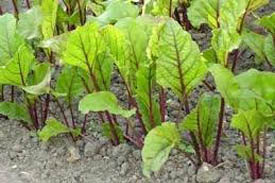Stocking Up: The Root Cellar
 Running out of space for food storage? Can’t dig the frozen ground for carrots and other roots? Don’t want to spend thousands for more freezers and room additions? You need the Old Time Root Cellar.
Running out of space for food storage? Can’t dig the frozen ground for carrots and other roots? Don’t want to spend thousands for more freezers and room additions? You need the Old Time Root Cellar.
As an example – this house was built pre-civil war, and over time has been modified. I want to point out that modern convenience, although great in comforts detract from the basic premise of food storage. Read on.
Prior to 1970 the ¼ basement was dug out for food storage. This was an earthen basement that did not freeze as it was below grade (soil level), and was heated naturally through the winter by heat rising from the core of the earth. Actually it is radioactive heat transference, but that is another story and not to get excited about since all basements have this. The average house in the olden times and the provident new construction contractor will take this into account and maybe offer a partial basement in just good old dirt-shored up, of course if you specify.
Hence we have food storage in a cold environment that you have access to from an outside trap door and another door, usually under the stairwell to access tons of root storage. Think potatoes, think carrots, think parsnips, think turnips, think rutabagas, think sun chokes, and on and on. No dirt in the kitchen-thank goodness says the cook; just brush it off in the dirt root cellar.
The underground dirt cellar is the most practical for the self-sufficient gardeners. However in my case the former owner in a long series of owners was a brick mason and cemented the basement in and installed oil fired boiler heat system. Pooh! The heat generated in the basement from the boiler was about 55(o) F. This was OK to store pumpkins and squash and sweet potatoes (wrapped in newspaper) but really too warm for root crops; which are a basic survival and health food.
Once I quit using the oil furnace (Oil is a diminishing ever expanding expensive resource) cold dampness followed and it was fit only for glass canning jars, which of course could have remained in a dirt root cellar. I use plastic storage shelves sold at Lowes and Home Depot that will not rot out from the dampness. Forget wood shelves.
I now use the cement/blocked in basement for canning jar storage; and the oil furnace sits forlorn and unused. I am investigating, on behalf of my Chilly Willy wife, a propane fired boiler system, which we will report on later in the year.
So in keeping with my garden obsessions I decided I would build an outside root cellar next to the garden. I had taken some pictures ten years back and cannot find them on the computer. I tried to update yesterday some pictures and the d— camera quit. I will have some pictures this summer and fall for you on the harvest and storage, in the mean time go to GOGGLE Images and write in Root Cellars. That is where our lead in pictures comes from and where you will find some interesting ideas.
This is a living-breathing storage area as the plant roots are alive and well awaiting your tender touch to do their duty in the stew pot. The underground artificial chamber maintains a constant temperature of 40 to 50F and the temperature is adjustable, as in a refrigerator, so that in the warm spells of fall and spring you can extend the storage of your valued labors.
In late spring, old veggies left can be given to the pigs or composted-some replanted for seeds. Nothing is wasted.
I dug a pit in the ground and used a basic square Lincoln log box construction utilizing treated railroad timbers. We carefully measure the pit and stack the railroad cross ties interlocking the corners and spiking down. I use a ¾” electric drill with a 3/8” x 18”long wood drill bit to provide the foot long spike easy hammering with a hand 3 lb sledgehammer into the tie below it. These were new ties and they fit like as glove. Older used ties may be twisted a bit and allow gaps. Fill these gaps with expanding foam. Used ties, if you have a big truck can be had at railroad terminals for two bucks each-loaded. Go to Lowes or Home Depot and they will cost about eleven bucks a tie. However at the store you can select, wherein at the railroad loading you will get a bunch of rotten ones in the center of the banded load-beware.
I use railroad ties because I like working with big heavy timbers. The pine is the lightest, along with Hickory, but oak ties are very heavy and of course the best.
The same basic construction can be met with building blocks, which if I was smarter maybe, that would have been a more 200 year life span; besides who wants to lift 300 lb. ties. A block method would be using patio blocks sidewise and stacked up like flat stonework so the soil is held in place but the natural wet and keeping qualities are kept. In the old days, many basement walls were made of flat stones.
The roof structure is a 45 angle heavy truss made from 2”X6” treated wood and sheathed with ½” marine treated plywood. Then tarred with 3” of cement trowel over it. Now it is strong and ready for the tons of dirt piled on top. Centerline inside is a 4”X4” post up to the centerline of the roof ridge board to add more support.
The basic box door, now reflecting back is smaller than what I originally used. I would now just mark the door off at 32” wide and chainsaw the timbers out leaving the top and bottom timbers across the wall intact for support.
Actually where you place the root cellar is important and you can place it on high ground so you are not flooded out. Another consideration is to have the doorway facing north which is the consistent cold side.
During garden season you take a day and clean it out. I spray diluted bleach inside to reduce natural fungi.
Storage of the roots is mostly in “plastic milk case carriers” which can be purchased at “Back to School Time” at all discount stores
Another important fact is that you have a dirt floor. Unfortunately I had an experience with a groundhog that could smell the potatoes and he tunneled down the side of the timbers and came up in the inside making a mess. I have since covered the floor with heavy grade close-knit fence wire. Another option would be setting in flat heavy stone work-not concrete.
 Now here is the secret to a Root Cellar. You need to vent it. Old Timers used to run a 4” or larger vent pipe straight up through the roof. This allowed excess heat to be vented off and they would regulate the heat loss by placing a “cap” of some sort on the pipe sticking up above a snow line. They usually had two pipes apart that allowed heat escape and cold egress.
Now here is the secret to a Root Cellar. You need to vent it. Old Timers used to run a 4” or larger vent pipe straight up through the roof. This allowed excess heat to be vented off and they would regulate the heat loss by placing a “cap” of some sort on the pipe sticking up above a snow line. They usually had two pipes apart that allowed heat escape and cold egress.
I took this a step further and put in a vent pipe in a corner and ran it up to the roofline and angled out at 90 under the overhang north side doorway. I also placed at the roof peak another vent pipe directly along and under the roof centerboard; this was the heat escape slotted vent pipe. Since heat rises it would be captured by this pipe and flow out. To ensure it flowed out, the other corner pipe trapped cold air (being heavy) and cold air pushed down into the room stabilizing the temperature.
If you do not vent, heat builds up surprisingly warm, and especially warm when there is a thaw in the weather.
The coldest time of the night is about 3 AM and that is when a small 120VAC timer clicks on and energizes a small in duct fan(s) I bought from Northern Tools. These are mainframe computer fans and are sometimes offered in 12VDC and 120VAC. This worked real well in keeping the root cellar cold but not freezing and of course if the winter turns bitter you just snap two caps over the vent pipes. It is not as complicated as you might think. You just have to get up and move and check your temperature from the thermometer that measures inside as well as outside.
There are lots of articles on storing food, carrots as an example in barrels of sand. I have found this concept impractical for the shear volume and weight. I prefer my milk box storage containers as I can just lift it up and sort out what I want. When sorting out you will find rot on some roots that were overlooked in initial storage, damaged by the digging fork. These can be trimmed and stewed without worry-throwing the cut out part on the compost pile.
Now you have an outside cold storage unit that once built will cost you nothing but pride.
Rodale Publishing offered a wonderful inspirational book by Nancy Bubel some years back: Root Cellaring. You will want to read this in advance as she has lots of good ideas.
When I lived in Virginia Beach we had a slab concrete floor for the garage. I was starting to tunnel under that to make a root cellar; then Diane caught me and she said: “ You have to go to the country…”
God Bless,
COPYRIGHT: 2010, www.Back2theLand.com, Mark Steel




November 18, 2018 @ 11:40 pm
Hello,
My wife and I live in Northern New Mexico and are looking at building a root cellar. We had the same thoughts about using RR ties as they are quite abundant out here. One question that came to mind was how much of a problem would the creosote be with regard to the fumes?
Thanks,
Jeff